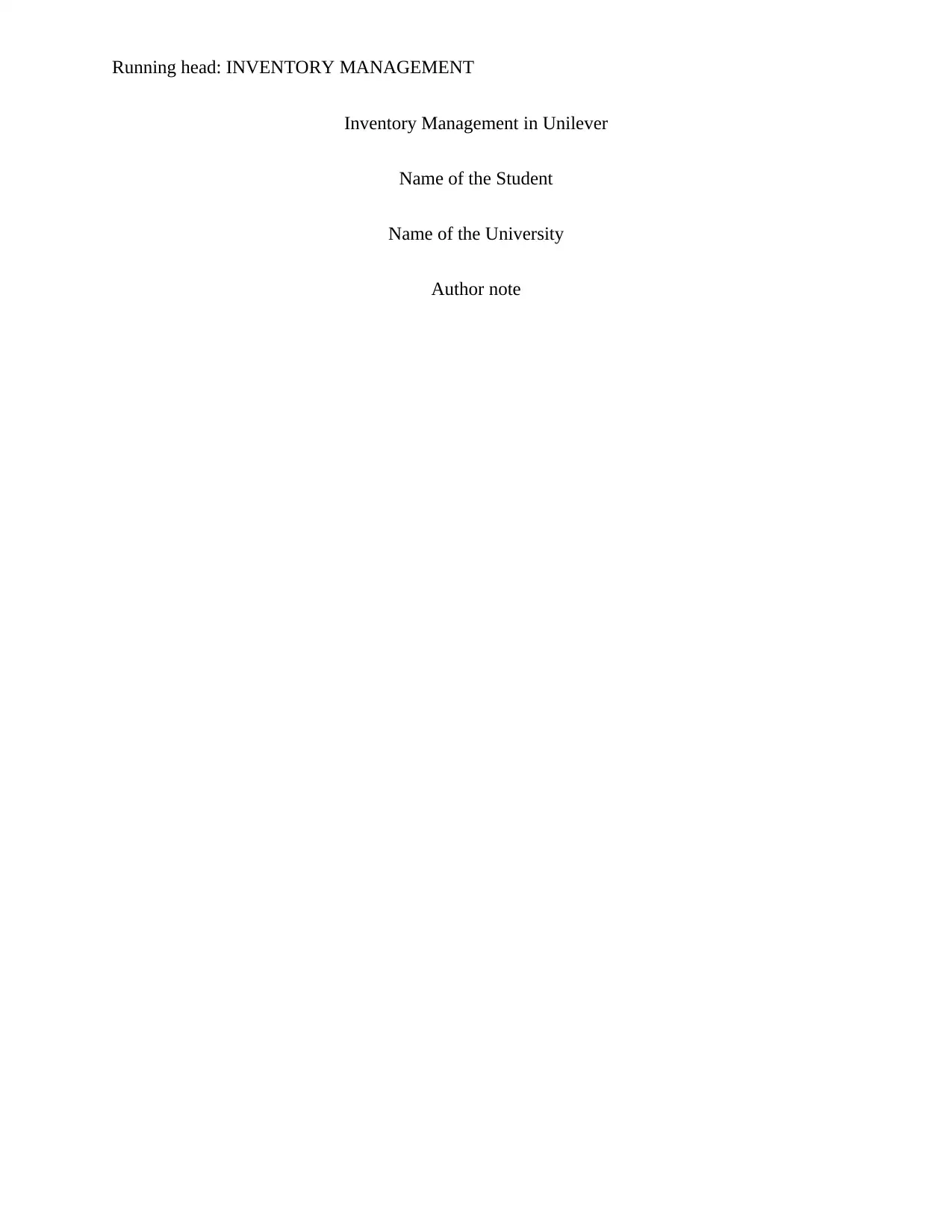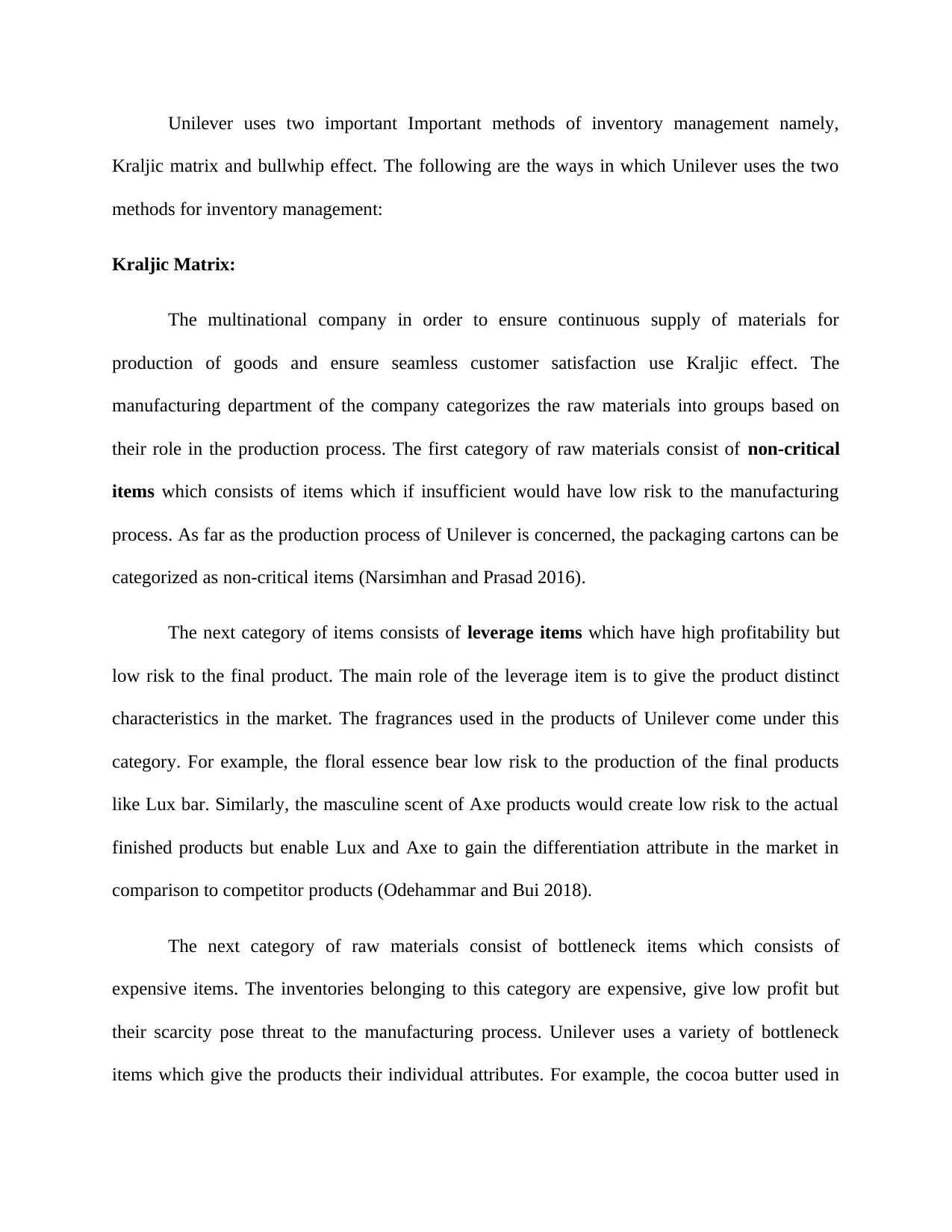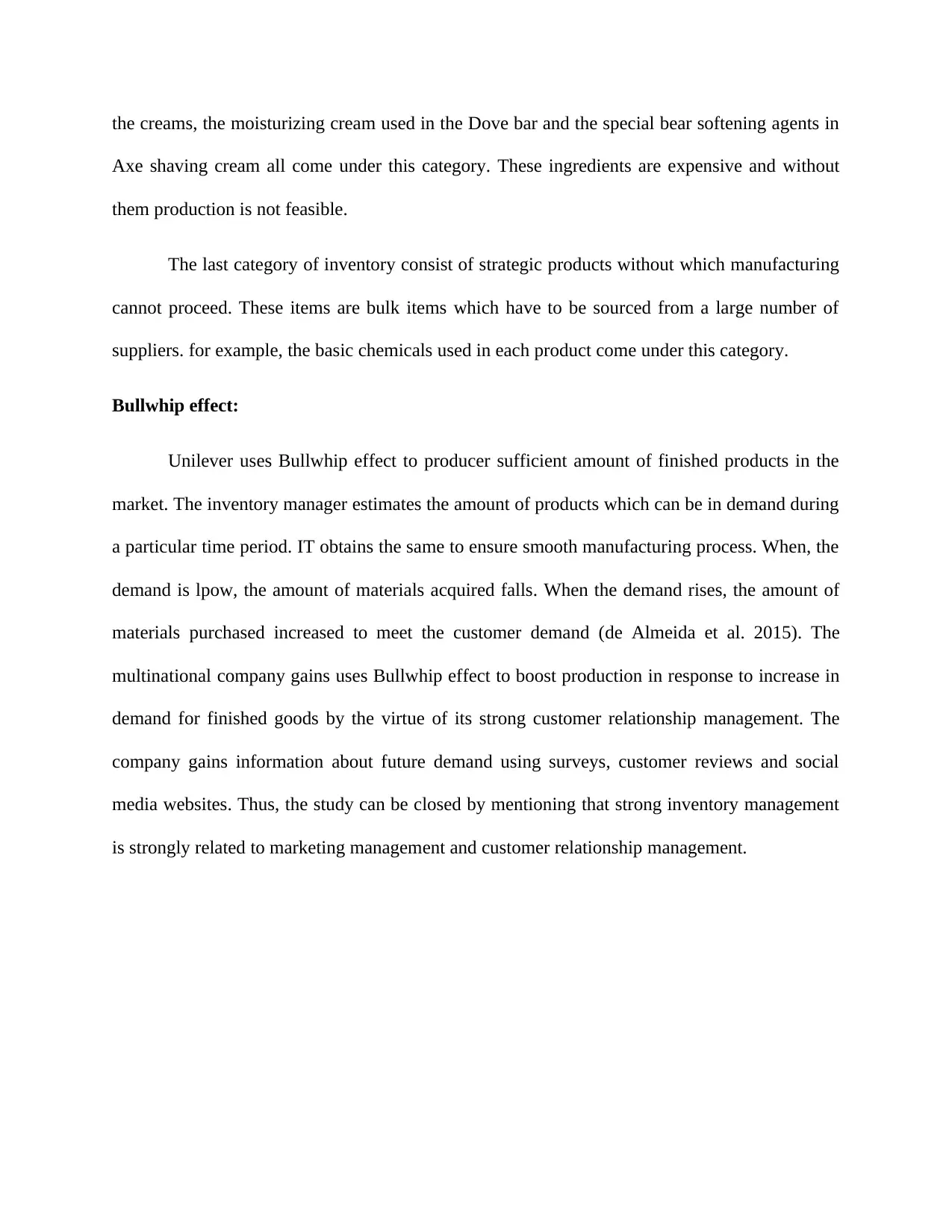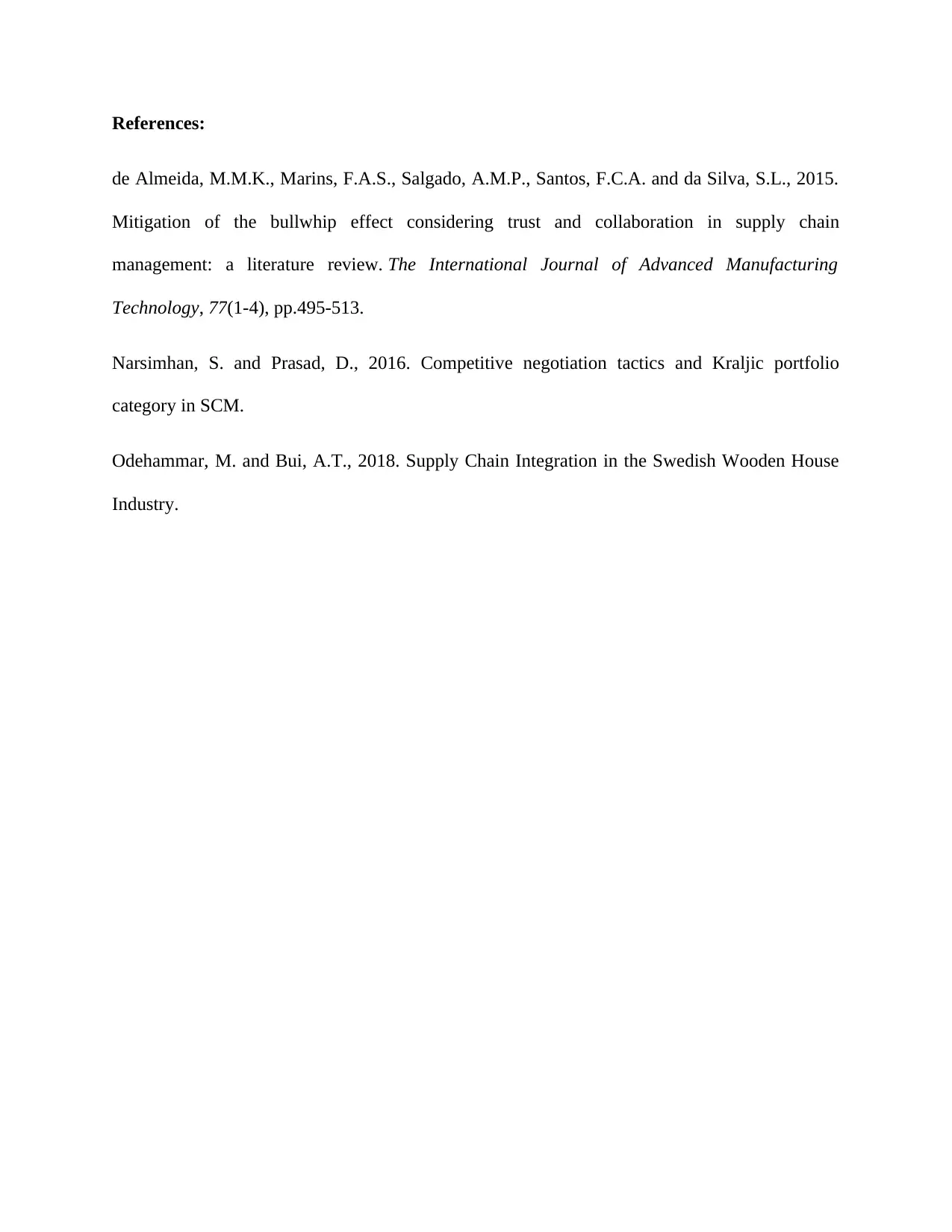Supply Chain Management Analysis: Unilever Inventory Strategies
VerifiedAdded on 2023/05/30
|4
|671
|146
Report
AI Summary
This report examines Unilever's inventory management practices, focusing on two key methods: the Kraljic matrix and the bullwhip effect. The Kraljic matrix is used to categorize raw materials based on their criticality and profitability, ensuring a continuous supply for production. The report categorizes items into non-critical, leverage, bottleneck, and strategic products, providing examples such as packaging cartons, fragrances, cocoa butter, and basic chemicals. The bullwhip effect is employed to manage the production of finished goods by estimating demand and adjusting material purchases accordingly, leveraging customer relationship management through surveys, reviews, and social media data. The analysis highlights the strong link between inventory management, marketing management, and customer relationship management within Unilever's supply chain.
1 out of 4










![[object Object]](/_next/static/media/star-bottom.7253800d.svg)